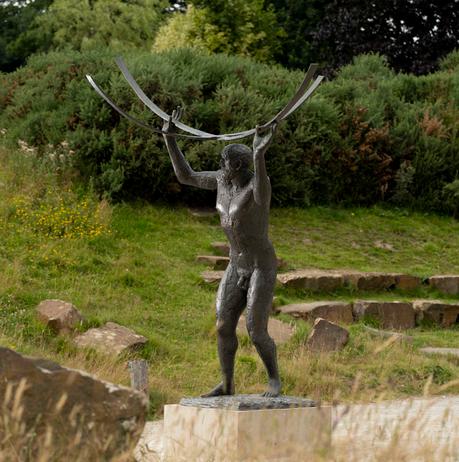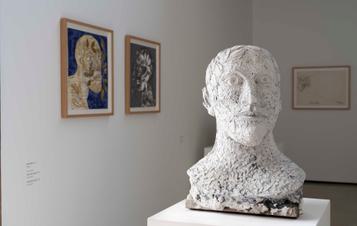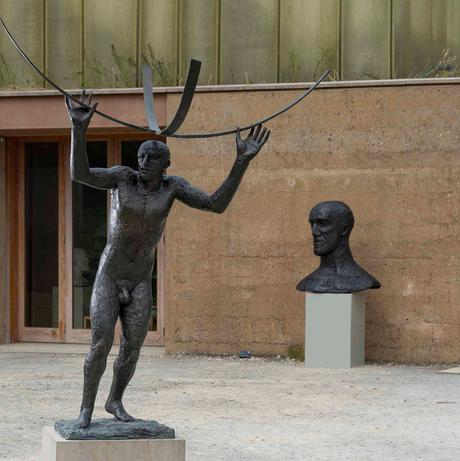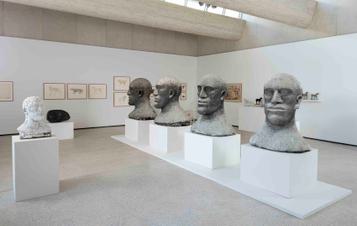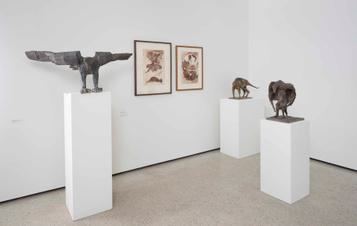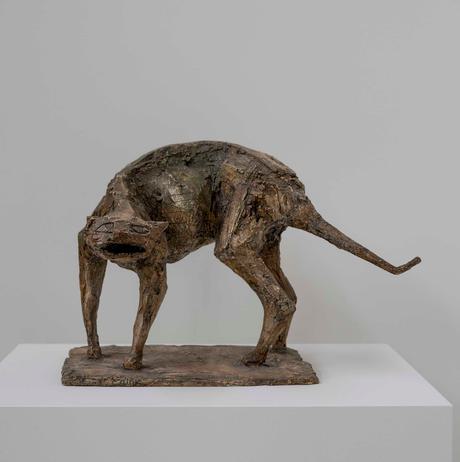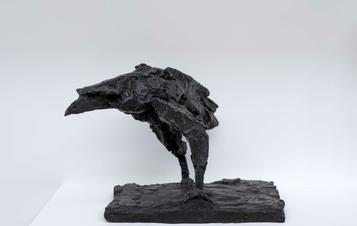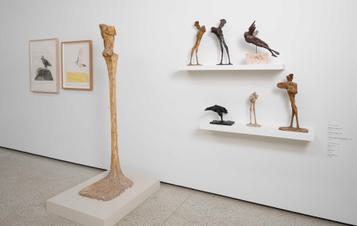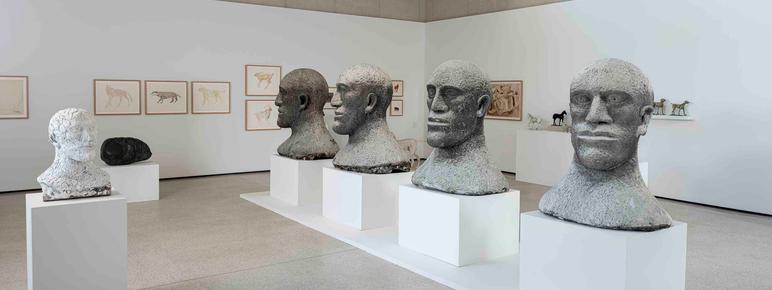
Elisabeth Frink: Natural Connection
– The Weston Gallery, OutdoorsAbout Elisabeth Frink: Natural Connection
Don’t miss this new exhibition of work by the late renowned artist Dame Elisabeth Frink, famed for her sculptures and prints of animals and the human figure.
Opening in July, this is a very special exhibition of work bequeathed to YSP in 2020 by the artist's family, with many of the works displayed together for the first time.
Curated from the collection that was left to the charity, the exhibition is installed both indoors at The Weston and nearby outdoors, and extends into YSP’s breathtaking landscape. It includes several striking outdoor bronze sculptures that explore humanity and its histories, habits and tragedies.
Entry to The Weston Galllery is free. To discover the whole exhibition across YSP, purchase a YSP General Admission Ticket.
Parking is free and kids go free.
Frink’s approach to animals and humans means that their complex and intertwined themes of vulnerability, nature connection, pain, joy and loss all endure – speaking to today’s audiences just as clearly as when she made them in the latter half of the 20th century.
The animal works displayed in the light filled The Weston Gallery show the dynamic way that Frink investigated shape and movement. Plaster models of some of the bronze works allow us to observe the artist’s process and create an immediate connection with her practice. The prints, too, have a direct connection to the artist’s thinking through vibrant mark-making. The transformation of one idea through plaster, bronze and paper shows how Frink’s thoughts could transfer through different ways of working.
For Frink, animals symbolised powerful natural forces and showed both the struggles and celebration of life. The wildness, strangeness and freedom of birds was a notable fascination. Similarly, horses and dogs were enduring; particularly their nobility in labour. Her prints and sculptures resonate with the deep connection that she felt for the forms and personalities of animals.
The towering bronze sculpture Atlas(1983) greets visitors to the Park outside The Weston, a mythological figure holding the weight of the earth above him. With over 90 sculptures nestled amongst historic parkland, lakes and woodland, there is a lot to explore at YSP. Installed amongst the trees on the far side of the Park the Riace figures join two life-sized bronzes, Protomartyr (1976) and Standing Man (1984–6).
Frink’s human figures were rarely portraits, instead they represent meditations on the complexities of humanity itself: suffering and resilience, anger and defiance, the mechanical and the natural, and sometimes embodying a spirit of place. She often used plaster to build the form over a metal wire armature, which was then cast in bronze, a technique that means the artist’s touch is visible. The connection between material and process is highlighted in this exhibition with many plaster works on view.
Frink had a longstanding relationship with YSP, which included her outdoor retrospective in 1983. A major exhibition had been in the planning when she passed away, resulting in a poignant memorial in 1993, and her work has regularly been shown nationally and internationally since.
The artist’s late son, Lin Jammet, arranged for 200 significant works to enter the YSP collection in 2020, comprising larger-than-life-size bronze figures, watercolours, domestic-scale bronzes and related plasters. The selection illustrates his mother’s deep understanding of different aspects of humanity in relation with animals – both wild and domesticated.
Alex Hodby, YSP’s Interim Head of Programmes: “Elisabeth Frink is such an important figure for YSP. She was a pioneer of form and purpose in sculpture and print, and her work has been part of the outdoor displays here for many years. In 2020 we were grateful recipients of a generous gift of bronzes, plasters and works on paper from her estate, which we care for and research.”
All works provided to Yorkshire Sculpture Park in accordance with the wishes of the artist’s late son, Lin Jammet, 2020.
Dame Elisabeth Frink CH DBE RA was a leading figure in British sculpture during the second half of the 20th century. She spent her childhood living near a military airbase during the Second World War, which had a great impact on her world view and artwork. She studied at the Guildford School of Art and Chelsea School of Art and was part of a postwar group of British sculptors described as the Geometry of Fear school.
Family activities
Pick up our Elisabeth Frink activity sheet in the gallery to help you explore the exhibition, or download it here.
Elisabeth Frink was a remarkable artist who created works in plaster and bronze, as well as drawings, and paintings. Growing up in the countryside, she developed a deep connection with nature, particularly with animals.
Her childhood was also marked by the start of World War II.
The impact of war influenced her art. Frink often created her own stories, enjoying this imaginative way of exploring the world. Her work is full of energy, as if capturing a single, important, and exciting moment in a story.
Take some time to explore the exhibition and choose an animal you would like to make friends with. Is it wild and free, or does it live in a home? Imagine it can talk – what stories would it tell you?
Close your eyes and imagine a new creature. Will it be strong and brave, or timid and shy? You could combine different animals to create this new creature.
Exhibition Accessibility
The exhibition is located in The Weston Gallery and outdoors in the area next to The Weston. The gallery space is lit with both natural and artificial light and has flat access throughout. There is bench seating located at the gallery entrance, and additional seating is available within The Weston restaurant. The outdoor area features pathways of compacted gravel.
Additional outdoor works are located Driveside near to the Underground Gallery, an approximately 20 minute walk from The Weston, or a short drive. The works are located on a grassy area next to a tarmac pathway. Off-road mobility scooters are available to hire from YSP Centre free of charge.
Accessibility Resources
The following resources are available for this exhibition. If you would like to make use of any of them, just ask a member of YSP staff.
- Large Print interpretation
- Braille interpretation
- Coloured transparencies for reading
- Ear Defenders (these are also available at the YSP Information Desk)
- Timers
Handling Materials
The artwork in this exhibition is too delicate to touch, so handling materials are available for visitors to feel and hold instead.
